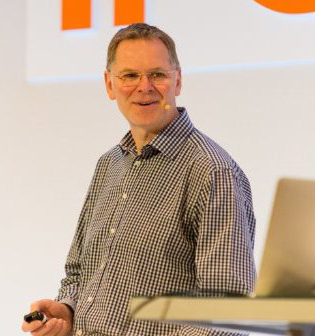Eventually we will all stop talking about BIM and it will just become another deliverable, says Adrian Girling, Graphisoft’s managing director for UK and Ireland.
Are you surprised at how much resistance there has been from architects to BIM?
In general, if I look at our own customers, I don’t feel that there is a big resistance from them at all, but maybe this is because they have been used to the concept for many years whilst using ARCHICAD.
Those which are required to do BIM Level 2 for UK government-funded projects have adapted, or are adapting, their workflows to exchange information in a multi-discipline collaborative environment and provide the deliverables the government is requesting.

Adrian Girling
For those architects that do not have the immediate pressure of needing to conform to the government’s BIM Level 2 mandate, we are still seeing many of them work in an IFC based, open BIM environment and provide 2D and 3D models, as well as suitable asset information, to the client’s required standard.
If I look outside of our existing customers, we are now regularly approached by architects who are using other modelling tools and have found that they cannot easily produce the deliverables for BIM Level 2, or are finding that they have to compromise between data and design. This has not been the case with our existing users, so perhaps that is why there is a perceived resistance in the greater market.
The move to ARCHICAD for BIM has been particularly prevalent among the large community of Apple computer users in architecture for whom ARCHICAD provides the only native full BIM solution.
Just how important is adopting BIM to the built environment industry?
This is of huge importance when considering the total life cost of a building. By adopting a BIM strategy from the outset the savings for construction, running and decommissioning the building can be huge, and are scaled with the size of the project – the bigger the project, the bigger the savings.
This has been a cornerstone of the government’s BIM Level 2 strategy which is also being adopted by the forward-thinking commercial clients as well. They all see the efficiencies which can be created with BIM in the construction and running of the asset.
Beyond the efficiencies and savings associated with BIM Level 2 projects, which focuses on providing asset data, we can see huge benefits of BIM adoption even in its simplest form. It is proven that BIM allows for more reliable 2D documentation derived directly from the BIM model. Additionally, production of fully coordinated documentation sets can be achieved more efficiently when the BIM models are part of a project collaborating process.
How do you respond to those that say BIM software costs too much?
At Graphisoft we believe in giving the customer a choice in how they want to license ARCHICAD. For the single and small practitioners, we offer ARCHICAD SOLO which enables the customer to have a fully functioning BIM Design tool for less than £1,500 on a perpetual licence.
Obviously there is a need for some investment but as we work as a solutions provider, meaning we also work to implement the solutions and not just sell the licence, we always try to be as flexible as possible with our licensing and provide fair pricing which is something we do not always see from others in the industry.
When designing with BIM Level 2 deliverables in mind, there can be a steep learning curve in the beginning as the processes are weighted towards the earlier work stages of the design process. ARCHICAD has been designed by architects for architects, so there is a very natural architectural workflow in ARCHICAD which minimises learning time and increases efficiency.
In fact, we can now leverage from the early stage modelling in Rhino and integrate that in to a BIM workflow as well as a high-end rendering engine seamlessly integrated in ARCHICAD itself.
What is going to be the most interesting next development for BIM?
It is easy to be distracted with drones, 3D printing, virtual reality and augmented reality, but the truth is that whilst they enhance the user’s and client’s experience of BIM, they are not truly driving BIM forward. The most important developments will come over the coming few years as BIM Level 3 (Digital Built Britain) is fully defined and we move to interoperable exchanges of information across different market sectors and enabling a cross asset view of a smart city.
This type of fully collaborative working can only be enabled by the adoption of industry-wide open standards, namely IFC as described in the Digital Built Britain report. This is something ARCHICAD users are already well versed in delivering and so we see this as a distinct advantage for our users that the government has the foresight to mandate this type of working for BIM Level 3.
The use of open data structures will also allow it to eventually go beyond the asset itself and connect to the IoT with live telemetry information and the integration in to Smart Cities.
How is Graphisoft helping architects utilise new technologies?
The collaborative nature of BIM is enabling architects to discover new ways of working. As a software developer who has been creating BIM solutions for architects for over 30 years we have become very quick at adapting to new industry trends and dedicate a large portion of our time to researching the latest industry requirements and driving innovation.
This has been evident in the last few years with our support for point cloud data and more recently our collaboration with McNeel, the developer of Rhino and Grasshopper, to streamline our solutions and give live and viable connections between the worlds of computational design and BIM.
Image: ArchiCAD was used at Land Rover BAR’s HQ in Portsmouth













